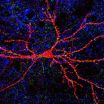(Press-News.org) The immunosuppressive drug fingolimod (trade name: Gilenya) was approved for an expanded therapeutic indication in May 2014: It is now also available for adults with highly active relapsing remitting multiple sclerosis (RRMS) who had received other pretreatment than interferon beta (IFN-β). In an early benefit assessment pursuant to the Act on the Reform of the Market for Medicinal Products (AMNOG), the German Institute for Quality and Efficiency in Health Care (IQWiG) examined whether the drug offers an added benefit over the appropriate comparator therapy in this patient group.
According to the findings, such an added benefit is not proven: For some of the patients, the drug manufacturer presented no data. For other patients, the available study data either showed no differences between the treatment groups, or the data were not evaluable.
G-BA specifies appropriate comparator therapy
The Federal Joint Committee (G-BA) distinguishes between two patient groups for the assessment: In patients with highly active RRMS despite full previous treatment (no interferon beta), fingolimod was to be compared with glatiramer acetate or interferon beta. In patients with incomplete previous treatment, the G-BA distinguishes between two cases for the appropriate comparator therapy: In patients who had received glatiramer acetate, this medication was to be optimized and continued. In patients who had received a different drug, treatment was to be changed to interferon beta or glatiramer acetate.
Only data of few study participants relevant for the assessment
One relevant study was available for the early benefit assessment, an approval study on fingolimod (TRANSFORMS), which compared treatment with fingolimod versus treatment with IFN-β1a in adults with RRMS. However, the disease was rated as "highly active" in only nearly half of the 866 participants. Only 263 of these 402 patients had received full previous treatment.
Only 42 participants, i. e. a little less than five percent of the total study population, had not been treated with interferon beta (17 patients in the fingolimod arm, 25 in the interferon beta arm). However, only these patients correspond to the subpopulation relevant for this benefit assessment, because it is only this subpopulation that fingolimod had received expanded approval for. The informative value of the results was considerably limited because only data of few participants were evaluable.
Differences between treatment arms not statistically significant
No deaths occurred during the total study duration of 12 weeks. There were differences between the fingolimod and the interferon beta group with regard to relapses and disability progression, but these were not statistically significant.
No evaluable data were available for the patient group for which fingolimod was newly approved regarding other aspects of the outcome "morbidity", e.g. fatigue or activities of daily living, and for the outcome "health-related quality of life". One of the reasons for this is that different proportions of patients were not considered in the analysis.
There were group differences in side effects (serious adverse events and treatment discontinuation due to adverse events), which again were not statistically significant.
Dossier without relevant study on patients with incomplete treatment
In its dossier, the manufacturer presented no relevant study for patients who had not received full previous treatment.
In summary, an added benefit of fingolimod is therefore not proven for patients with highly active relapsing remitting multiple sclerosis (RRMS) who had received a different pretreatment than interferon beta.
Discrepancy between approval and study population
In 2011, fingolimod had been approved for two therapeutic indications: for rapidly progressive severe RRMS and for highly active RRMS that had been pretreated with interferon beta. For these two patient groups, IQWiG had published a dossier assessment according to AMNOG in January 2012.
In this first assessment the problem had already occurred that participants with different types of RRMS had been included in the relevant study, and that the authorities had then limited the approval to specific, relatively small patient groups. Since the first approval and assessment, the manufacturer apparently conducted no further studies for the expansion of approval.
G-BA decides on the extent of added benefit
The dossier assessment is part of the overall procedure for early benefit assessments supervised by the G-BA. After publication of the manufacturer's dossier and IQWiG's assessment, the G-BA conducts a commenting procedure, which may provide further information and result in a change to the benefit assessment. The G-BA then decides on the extent of the added benefit, thus completing the early benefit assessment.
INFORMATION:
An overview of the results of IQWiG's benefit assessment is given by a German-language executive summary. In addition, the website » http://www.gesundheitsinformation.de, published by IQWiG, provides easily understandable and brief German-language information on fingolimod.
The G-BA website contains both general English-language information on benefit assessments pursuant to §35a Social Code Book (SGB) V and specific German-language information on the assessment of fingolimod.
More English-language information will be available soon (Sections 2.1 to 2.6 of the dossier assessment as well as subsequently published health information on » http://www.informedhealthonline.org.) If you would like to be informed when these documents are available, please send an e-mail to » info@iqwig.de.
Fingolimod in new therapeutic indication: Added benefit not proven
There are no data for highly active RRMS with other pretreatment than interferon beta, or these data show no relevant differences
2014-10-10
ELSE PRESS RELEASES FROM THIS DATE:
Mechanism that repairs brain after stroke discovered
2014-10-10
A previously unknown mechanism through which the brain produces new nerve cells after a stroke has been discovered at Lund University and Karolinska Institute in Sweden. The findings have been published in the journal SCIENCE.
A stroke is caused by a blood clot blocking a blood vessel in the brain, which leads to an interruption of blood flow and therefore a shortage of oxygen. Many nerve cells die, resulting in motor, sensory and cognitive problems.
The researchers have shown that following an induced stroke in mice, support cells, so-called astrocytes, start to form ...
New technique enables increasingly accurate PET scan to detect cancer and heart conditions
2014-10-10
A novel technique which reduces image degradation caused by respiratory motion during a PET scan was developed in a recent study at the University of Eastern Finland. PET scanning is routinely used to detect cancer and heart conditions. The new technique presented in the PhD thesis of Tuomas Koivumäki, MSc (Tech.), is based on bioimpedance measurement and it allows for image reconstruction at a specific phase of the patient's breathing pattern. This, in turn, makes it possible to reduce image degradation caused by motion.
In the future, the newly developed technique ...
LSU Health tumor registry data find acadiana colon cancer rates among nation's highest
2014-10-10
New Orleans, LA – A special study using data from LSU Health New Orleans School of Public Health's Louisiana Tumor Registry has found that colorectal cancer incidence rates in the Louisiana Acadian parishes are among the highest in the United States. This study appears to be the first to identify a high rate of cancer in a large, regional, US founder population, raising the possibility of a genetic predisposition. Alternatively, an unidentified, robust environmental risk factor may be present. The paper is published online in Clinical and Translational Gastroenterology, ...
An enzyme and synaptic plasticity
2014-10-10
A small, "empty" space teeming with activity: a synapse is a complex structure where the neural (electrical) signal from the presynaptic neuron, as it travels towards its target –a muscle, a gland or another neuron – turns into a chemical signal capable of crossing the synaptic space before becoming electrical again once on the other side. A synapse is a "dynamic" space not only because of the endless work that goes on there, but also for its ability to change its action over time (synaptic plasticity) as a result of either normal physiological processes (e.g., ...
The Lancet Global Health: Widely used sanitation programs do not necessarily improve health
2014-10-10
The sanitation intervention delivered under the terms of the Government of India's Total Sanitation Campaign—the world's largest sanitation initiative—provided almost 25 000 individuals in rural India with access to a latrine. However, it did not reduce exposure to faecal pathogens or decrease the occurrence of diarrhoea, parasitic worm infections, or child malnutrition.
"The programme is effective in building latrines, but not all households participate"*, explains lead author Professor Thomas Clasen from Emory University, Atlanta, USA and the London School ...
University of Maryland School of Medicine begins Ebola vaccine trials in Mali
2014-10-10
VIDEO:
Dr. Myron M. Levine, Director of the Center for Vaccine Development at the University of Maryland School of Medicine describes the Ebola vaccine testing taking place in Mali, West Africa.
Click here for more information.
Professor Myron M. Levine, MD, Director of the Center for Vaccine Development (CVD) at the University of Maryland School of Medicine (UM SOM), and UM SOM Dean E. Albert Reece MD, PhD, MBA, announced today that the CVD, in conjunction with its sister institution, ...
TSRI scientists create mimic of 'good' cholesterol to fight heart disease and stroke
2014-10-10
LA JOLLA, CA – October 9, 2013 - Scientists at The Scripps Research Institute (TSRI) have created a synthetic molecule that mimics "good" cholesterol and have shown it can reduce plaque buildup in the arteries of animal models. The molecule, taken orally, improved cholesterol in just two weeks.
This research, published in the October issue of Journal of Lipid Research, points scientists toward a new method for treating atherosclerosis, a condition where plaque buildup in the arteries can cause heart attacks and strokes.
"Atherosclerosis is the number one killer ...
Fish moving poleward at rate of 26 kilometers per decade
2014-10-10
Large numbers of fish will disappear from the tropics by 2050, finds a new University of Britsh Columbia study that examined the impact of climate change on fish stocks. The study identified ocean hotspots for local fish extinction but also found that changing temperatures will drive more fish into the Arctic and Antarctic waters.
Using the same climate change scenarios as the Intergovernmental Panel on Climate Change, researchers projected a large-scale shift of marine fish and invertebrates. In the worst-case scenario, where the Earth's oceans warm by three degrees ...
Using a novel biological aging clock, UCLA researchers find obesity accelerates aging of the liver
2014-10-10
Using a recently developed biomarker of aging known as an epigenetic clock, UCLA researchers working closely with a German team of investigators have found for the first time that obesity greatly accelerates aging of the liver. This finding could explain the early onset of many age-related diseases, including liver cancer, in obese subjects
Although it had long been suspected that obesity ages a person faster, it hadn't been possible to prove the theory, said study first author Steve Horvath, a professor of human genetics at the David Geffen School of Medicine at UCLA ...
New meningitis vaccine only cost-effective at low price
2014-10-10
The ideal cost per dose for a new meningitis vaccine ranges from £3 up to a possible £22 only if several vaccine favourable factors all coincide, according to research which has analysed how to maximise the reduction in cases while making a new vaccination programme cost-effective.
Bexsero is the first vaccine to broadly protect against meningitis B disease, but research now suggests the Government would need to negotiate a considerable reduction in the £75 list price in order to provide the same value for money as other programmes in the NHS.
In March ...
LAST 30 PRESS RELEASES:
University of Oklahoma researcher awarded funding to pursue AI-powered material design
Exploring how the visual system recovers following injury
Support for parents with infants at pediatric check-ups leads to better reading and math skills in elementary school
Kids’ behavioral health is a growing share of family health costs
Day & night: Cancer disrupts the brain’s natural rhythm
COVID-19 vaccination significantly reduces risk to pregnant women and baby
The role of vaccination in maternal and perinatal outcomes associated with COVID-19 in pregnancy
Mayo Clinic smartwatch system helps parents shorten and defuse children's severe tantrums early
Behavioral health spending spikes to 40% of all children’s health expenditures, nearly doubling in a decade
Digital cognitive behavioral treatment for generalized anxiety disorder
Expenditures for pediatric behavioral health care over time and estimated family financial burden
Air conditioning in nursing homes and mortality during extreme heat
The Alps to lose a record number of glaciers in the next decade
What makes a good proton conductor?
New science reporting guide published for journalists in Bulgaria
New international study reveals major survival gaps among children with cancer
New science reporting guide published for journalists in Turkey
Scientists develop a smarter mRNA therapy that knows which cells to target
Neuroanatomy-informed brain–machine hybrid intelligence for robust acoustic target detection
Eight SwRI hydrogen projects funded by ENERGYWERX
The Lundquist Institute and its start-up company Vitalex Biosciences Announces Strategic Advancement of Second-Generation fungal Vaccine VXV-01 through Phase 1 Trials under $40 Million Competitive Con
Fine particles in pollution are associated with early signs of autoimmune disease
Review article | Towards a Global Ground-Based Earth Observatory (GGBEO): Leveraging existing systems and networks
Penn and UMich create world’s smallest programmable, autonomous robots
Cleveland researchers launch first major study to address ‘hidden performance killer’ in athletes
To connect across politics, try saying what you oppose
Modulating key interaction prevents virus from entering cells
Project explores barriers to NHS career progression facing international medical graduates
Jeonbuk National University researchers explore the impact of different seasonings on the flavor perception of Doenjang soup
Two Keck Medicine of USC Hospitals named Leapfrog Top Teaching Hospitals
[Press-News.org] Fingolimod in new therapeutic indication: Added benefit not provenThere are no data for highly active RRMS with other pretreatment than interferon beta, or these data show no relevant differences



